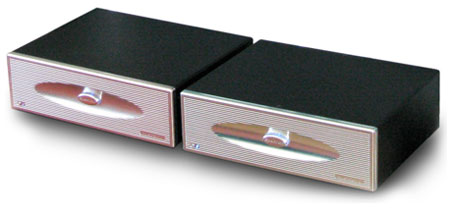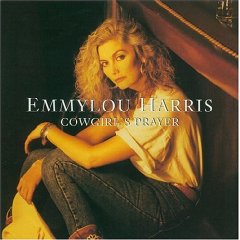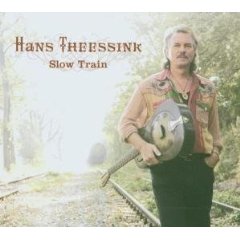Spectron Audio Musician III Signature Edition MK2 Monoblocks (With V-Caps)
| Spectron Audio Musician III Signature Edition MK2 Monoblocks (With V-Caps) |
| More Power = More Music |
|
|
|
August 2008 |

Well that didn’t take long. No siree mister, that didn’t take long at all. When I borrowed an amplifier for the Musician III Signature Edition review (here) it was an exercise in curiosity. It wasn’t until 30 seconds into listening that I realized I had found a new reference amplifier. I had not planned or budgeted for a new addition and first impressions can be deceiving so I proceeded to throw a wide variety from my music collection at the amplifier. The Spectron SE withstood the test and I ordered one that became my new champion – temporarily.
Even before my personal amplifier was fully burned in I made the mistake of borrowing the review amplifier again and running both in a monoblock configuration. I say mistake because never do that if you are not prepared to purchase a second amplifier. Don’t do the crime if you can’t do the time. I promptly decided to order a second amplifier.
Timing is everything. By coincidence, Spectron was preparing to introduce an MK2 model and, for the first time, actively offering upgrade options (V-Caps and Bybee Quantum Purifiers) on new amplifiers. Because I wanted to have the XLR inputs internally bridged and also get the V-Cap option I elected to purchase two matching MK2 amplifiers. In the discussion that follows, unless specifically indicated otherwise, “SE” will refer to a stereo Musician III Signature Edition, “MK2” will refer to a Musician III SE MK2 with V-Caps operated in stereo, and “monoblocks” will be two MK2 amplifiers with V-Caps operated in bridged configuration.
Recipe for Success
Let me elaborate on some of the changes between the new standard (no V-Caps) MK2 and the SE amplifier I reviewed in January 2008. The Mk2 model has improved input and output stages, numerous upgraded parts throughout, and completely re-engineered power switching modules. The Mk2 also includes audiophile-quality hook-up wire and custom-designed capacitors in the sonically crucial reconstruction filter.
The power supply V-Cap upgrade option includes four Oil Impregnated Metalized Polypropylene (OIMP) capacitors each bypassed by a Teflon® Film Tin Foil (TFTF) capacitor. The Bybee Quantum Purifier power supply upgrade option (not installed on the amplifiers reviewed) includes a Super Effect Bybee on each of the hot and neutral legs and a standard Bybee on the ground.
Spectron Musician series amplifiers can be operated in bridged (monoblock) mode but they are constructed as stereo amplifiers with the full complement of inputs and outputs. To operate a Musician amplifier in monoblock mode it is necessary to input the same audio signal to both inputs of the amplifier. In other words the left monoblock has to receive the left output from the preamplifier into both of the Spectron inputs. External bridging requires a Y-adapter or twin pairs of interconnects from a preamplifier that provides that option. Internal bridging of the XLR inputs (during the initial amplifier manufacture) eliminates the need for extra interconnects or Y-adapter.
Regardless of how the amps are bridged (internally or externally) it is necessary to set the Spectron’s phase switches so one input on each amplifier is out of phase with the other input. In the monoblock configuration speaker cables are only connected to the positive (+ or red designation) binding posts. An internally bridged (XLR inputs) Spectron amplifier can still be operated as a stereo amplifier when used with the RCA inputs. When using the RCA inputs all phase switches and speaker cables should be configured in the standard manner.
Power to the Speakers, Right On!
Spectron amplifiers in the monoblock mode have three times the power and twice the headroom of a stereo amplifier. Continuous power output (RMS) is the industry standard for expressing power but headroom is the true measure of the amplifier’s ability to reproduce large transients. Headroom is limited by the power supply voltage, which limits the peak voltage. Spectron stereo amplifiers use a supply of +/- 120V. The monoblocks use a +/- 240V supply and can deliver 7000 watts and hold it for 500 msec.
But monoblock benefits exceed the obvious of just more power. Spectron amplifiers are fully balanced when used in the monoblock configuration. The out of phase input in the balanced mode doubles the slew rate and bandwidth while suppressing both intrinsic amplifier distortions and noise that originates upstream from the amplifier. In balanced mode intrinsic amplifier distortions arrive at the speakers with essentially equal amplitude but with opposite polarity and therefore cancel each other. Low noise combined with tremendous headroom results in uniform low distortion even at full output. That is the region where most amplifiers increase distortion and become unpleasant to listen to.
A word of caution is prudent here. When used in the monoblock mode the amplifiers see only half the impedance that they would if they were in stereo mode. That means that the monoblocks in my system are seeing half of the nominal 3-ohm rating of my Apogees. That nominal rating gives no accounting for mood swings.
The Proof is in the Listening
For the monoblocks review I used a stereo Musician III SE for the Apogee subwoofers. It almost seems disrespectful to use such a fine amplifier for subwoofer duty but I needed its speed and power to keep up with the monoblocks on the main speakers. All components were connected to a Shunyata Research V-Ray. To handle all the power on the main speakers I biwired using two pairs of Shunyata Phoenix speaker cables. The Shunyata cables may seem lacy and delicate but each cable is an aggregate 10 AWG.
 Although the monoblocks carry a big stick, they can speak softly when necessary. Few artists give goose bumps and evoke the depth of emotion that Emmylou Harris does. Her voice is her instrument and she plays it with skill equal to the most accomplished musician. On “The Light” from her CDCowgirl’s Prayer [Asylum 61541-2] the monoblocks capture the PRAT and vocal nuances that lift the lyrical essence of the song from actual despair to the realization that the darkness has passed. The same CD is home to one of her finest compositions, “Prayer in Open D”. The monoblocks capture the delicate yet powerful interplay between various stringed instruments, a Hammond B-3 organ and Emmylou’s voice where careful modulation, a quiver here, a catch there, and subtle inflections tell at least as much as the words themselves. These songs are not background music. They are serious sit-down-and-listen music and the monoblocks rise to the challenge admirably. When the monoblocks speak softly, you better listen.
Although the monoblocks carry a big stick, they can speak softly when necessary. Few artists give goose bumps and evoke the depth of emotion that Emmylou Harris does. Her voice is her instrument and she plays it with skill equal to the most accomplished musician. On “The Light” from her CDCowgirl’s Prayer [Asylum 61541-2] the monoblocks capture the PRAT and vocal nuances that lift the lyrical essence of the song from actual despair to the realization that the darkness has passed. The same CD is home to one of her finest compositions, “Prayer in Open D”. The monoblocks capture the delicate yet powerful interplay between various stringed instruments, a Hammond B-3 organ and Emmylou’s voice where careful modulation, a quiver here, a catch there, and subtle inflections tell at least as much as the words themselves. These songs are not background music. They are serious sit-down-and-listen music and the monoblocks rise to the challenge admirably. When the monoblocks speak softly, you better listen.
 Throughout the CD Slow Train[Blue Groove 1620], Hans Theessink blends his rich baritone with background vocals and a variety of instruments including a pump organ, mandoguitar and Wurlitzer piano. The monoblocks navigate the tracks like a chameleon, changing color as needed to follow the diversity and provide a well defined yet blended presentation. The backing vocals are especially smooth yet reveal the multiple singers on the tracks, “Slow Train” and “Run on For a Long Time”. With the extra power of the monoblocks the pace is relaxed yet simultaneously invigorating and the presentation is room filling. The music commanded an upward turn of the volume knob.
Throughout the CD Slow Train[Blue Groove 1620], Hans Theessink blends his rich baritone with background vocals and a variety of instruments including a pump organ, mandoguitar and Wurlitzer piano. The monoblocks navigate the tracks like a chameleon, changing color as needed to follow the diversity and provide a well defined yet blended presentation. The backing vocals are especially smooth yet reveal the multiple singers on the tracks, “Slow Train” and “Run on For a Long Time”. With the extra power of the monoblocks the pace is relaxed yet simultaneously invigorating and the presentation is room filling. The music commanded an upward turn of the volume knob.
What can I say about distortion at full output? Nothing, my speakers were amazingly able to absorb much (much more than I expected) of the output from the monoblocks but my ears could not take the “full monty”. I can say this however, even at those levels I never heard the Spectron amplifiers sound harsh or constrained so I knew there was no clipping. I had merely exceeded sane listening levels and approached the power handling capacity of my midrange/tweeter drivers.
Was it too much power? No! I have said it before and repeat it here. Most systems are under-powered using the standard fare of 150-250 WPC amplifiers [publisher’s note: this is not the case with super sensitive loudspeakers like horns and/or lowther types where sensitivity usually hovers above the 95 – 100dB percentile]. We have been conditioned to think they are powerful by decades of few (or no) affordable or practical (size, heat) options. Sure that 4 cylinder engine will tool down the road all day at 65 mph but when you want to pass (prestissimo) or climb a hill (fortissimo) you need more horsepower and not just a couple. Headroom is the key to both relaxed and powerful music.
Because many speakers will not require the exceptional power of Spectron monoblocks and many users will have money and space limitations I also compared one MK2 operated in stereo to a pair operated as monoblocks. To minimize cable differences between evaluations in stereo and monoblock modes I used the RCA version of the Harmonic Technology Magic Link II for the stereo configuration and the XLR version for the monoblock configuration.
Even though a stereo MK2 is no slouch in the bass and dynamics department, the monoblocks were more dynamic and had significantly more bass impact. But the differences did not end there. For me there were other, even more significant, differences.
With the monoblocks there was a noticeable ease of presentation and the sound stage became more expansive while maintaining definition. My speakers seemed to grow. The monoblocks also provided a dramatic increase in tonal density. A rich harmonic texture and increased definition was evident in everything from the lows (upright bass, piano, and guitar lower notes), through the midrange (vocals, and middle range of the piano and guitar) to the upper reaches of violins. In addition to all the intimacy of the stereo MK2, the monoblocks had additional visceral impact even at normal listening levels. The weight of guitar and piano notes was relayed with an in-the-room presence and clarity. Compared to the stereo MK2, the monoblocks were a more complete artist’s sketch with the shadings more fully reflecting all the shadows and highlights. This weight and detail carried to adjacent rooms in my home where only the outline of the music had prevailed before.
The noise reduction of the monoblocks was further reflected in a blacker background and a smoother sound but those improvements were more subtle. While some features (bass, dynamics and tonal density) stand out, overall performance is extremely well balanced and the aggregate of all the benefits from the monoblocks is nothing less than stunning. What makes the amplifiers so impressive is the sum total of their attributes, which results in performance that is simultaneously exciting and non-fatiguing, a rare achievement.
Every year at CES and T.H.E. Show I hear some rooms that stand a cut above with the size and ease of their presentation. These are usually the larger rooms with the most expensive equipment. With the monoblocks my Apogees took on majesty much greater than their size would suggest or had previously revealed.
Dueling Spectrons
Inquiring minds, including mine, need to know how a stereo SE compares to a stereo MK2 with V-Caps. To do a comparison I connected one MK2 in the stereo mode using the RCA inputs and compared it to a SE.
The MK2 with V-Caps clearly bested the SE in smoothness, low and mid bass (upright bass, guitar, and piano) definition and midrange weight. Vocals were silkier and pianos had more sparkle and authenticity. Violins were less strident. I would call it a toss up with respect to dynamics and drums. The latter was a hard comparison to make since after listening to the monoblocks, the stereo amplifiers were found wanting.
Boring but Important Practical Stuff
Spectron amplifiers draw 40 watts at idle. Spectron Audio recommends leaving the amplifiers on continuously. I noticed that if I turn the amplifiers off overnight the sound is somewhat rough at first. This quickly diminishes (15-30 minutes) but probably takes the amplifier at least an hour to regain most of its performance. Turning the amplifiers off for longer periods seems to require a little longer time to stabilize so it appears to be more than just temperature related.
To find out what temperature the Spectons operate at, I used a multimeter and thermocouple temperature probe to measure the external temperature of each amplifier at its warmest point (top, right-rear quadrant). After stabilizing in idle mode each of the three amplifiers measured 95 (+/- 1) degrees Fahrenheit. The room temperature was 79 degrees. After four hours of hard playing the amplifiers measured 98 (+/- 1) degrees. The afternoon sun had heated the room to a muggy 82 degrees. These relatively cool-running amplifiers are much appreciated during the triple-digit Sacramento summer days.
Conclusion
Continued use of the Musician III SE has only confirmed the praise I awarded in my January, 2008 review. The stereo SE MK2 with V-Caps is a noticeable and worthwhile improvement and easily competitive with much more expensive amplifiers.
Monoblocks, at double the cost, elevate the price of admission and open the competition to some heavyweight contenders that I have not had the pleasure of hearing in my system. (Although I do not know of any that pack as much punch or are as user-friendly.) In my system the expense was well worth it because I received new speakers as part of the bargain. My Apogees are finally living up to the promise that had always been hinted at but never fully realized.
Apogee Acoustics (wisely) never published sensitivity figures for the Stage speakers but I have seen several reviews that report a sensitivity (or insensitivity) as low as 81/82dB. That is on the low side of low. Although many speakers may not benefit from the extra power and headroom of the monoblocks, they will benefit from the fully balanced noise reduction. But if like me, you have a pair of underachieving “bad boys”, slap them upside the head with Spectron monoblocks. They will respond “Thank you, I needed that”.

![]()
Specifications:
Specifications are not available for the monoblocks. Specifications listed are for the Spectron Musician III Signature Edition MK2 Stereo:
Power: (Watts per channel, both channels driven)
600 Watts at 8 Ohms
800 Watts at 4 Ohms
1400 Watts at 2 Ohms
Inputs: RCA and XLR
Speaker outputs: Cardas Patented Single Knob Adjustment and Neutrik Speakons
Input impedance: RCA and XLR 50,00 ohms
Output impedance: 0.018 ohms @1kHz, 0.095ohms @20kHz
Damping ration: 500:1
Gain: 26dB
Efficiency: >92% (Amp module)
THD: <.03% from 1W to 600W @ 8Ω ( in the listening range)
<.06% from 1W to 600W @ 8Ω ( > 22 kHz)
SNR: 115 dB
Line Voltage: 100, 120, or 240 VAC 50/60Hz (switch selectable)
Dimensions: 17”W x 5.25”H x 14”D
Weight: 52 Pounds (shipping 64 pounds)
Warranty: Three years
Price: $7195 per amplifier
Upgrades (price per amplifier at the time of manufacture)
V-Caps: $1400
Super Effect Bybees: $2000
V-Caps & Bybees: $3300
Internal bridge on XLR: $75
Address:
Spectron Audio
9334 Oso Avenue, Unit E
Chatsworth, CA 91311
Telephone: (818) 435-2090
Email: info@spectronaudio.com
Website: www.spectronaudio.com
![]()
Don’t forget to bookmark us! (CTRL-SHFT-D)
Stereo Times Masthead
Publisher/Founder
Clement Perry
Editor
Dave Thomas
Senior Editors
Frank Alles, Mike Girardi, Russell Lichter, Terry London, Moreno Mitchell, Paul Szabady, Bill Wells, Mike Wright, and Stephen Yan,
Current Contributors
David Abramson, Tim Barrall, Dave Allison, Ron Cook, Lewis Dardick, John Hoffman, Dan Secula, Don Shaulis, Greg Simmons, Eric Teh, Greg Voth, Richard Willie, Ed Van Winkle, Rob Dockery, Richard Doron, and Daveed Turek
Site Management Clement Perry
Ad Designer: Martin Perry





Be the first to comment on: Spectron Audio Musician III Signature Edition MK2 Monoblocks (With V-Caps)